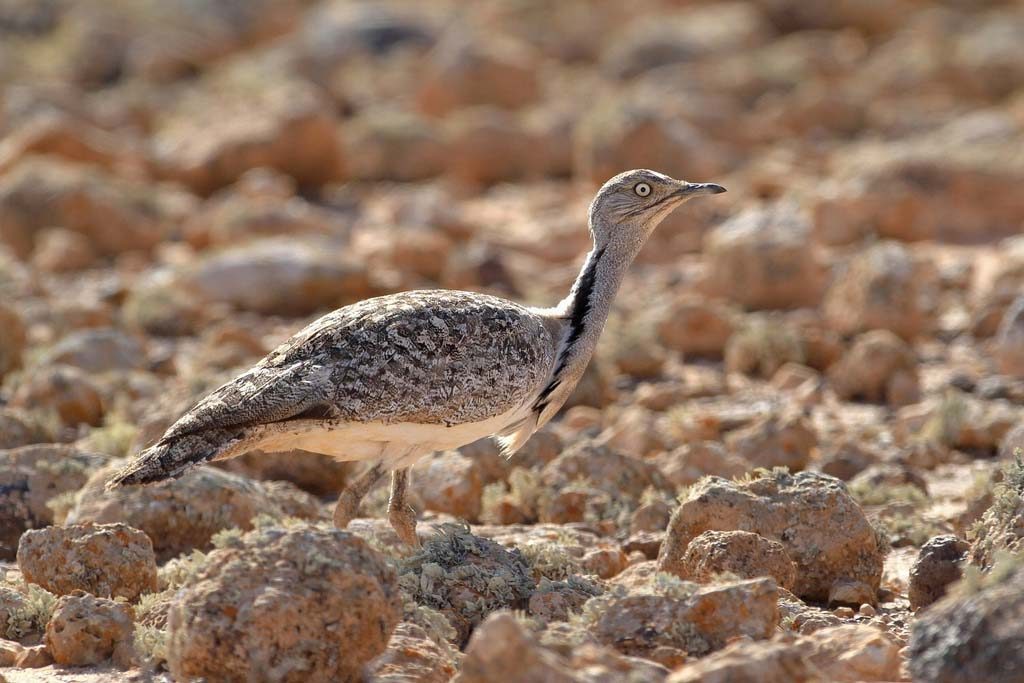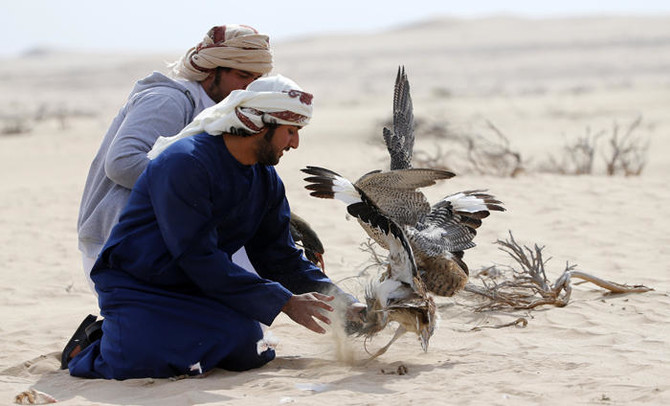
A wildlife breeding centre in Qatar has received more than 1,000 Asian houbara birds as part of an effort to replenish its stocks of the endangered species.
The Asian houbara bustard is a bird characterized by a large, speckled sandy brown upper body, a creamy white underside as well as long legs, a slender neck and a wingspan that can reach 1.5 meters, according to the Abu Dhabi-based International Fund for Houbara Conservation.
The IFHC is transferring the birds to Qatar’s Rawdat Al Faras Houbara Breeding Center in an attempt to form an initial breeding flock that will produce chicks for future reproduction and release.
The fate of the birds in Qatar is unclear. In the past, houbara bustards have been bred here for hunting purposes, Cromwell Purchase, the acting director at the Al Wabra Wildlife Preservation, told Doha News.
Hunting bird
The bird’s popularity with hunters has resulted in a dramatic decline in the number of houbara bustards across the Gulf, added Purchase, who was not involved in this latest initiative.
“It isn’t really doing very well,” he said, adding that pinpointing the number of houbara bustards remaining in the wild is difficult because once word gets out about a sighting, hunters typically descend upon the location.
“The houbara bustard is the choice of falcon hunters. It gives (the falcons) very good competition for hunting and is one of the best game birds. And that’s why there are so many problems.”
Indeed, the IFHC – which aims to restore sustainable wild populations of houbara to preserve traditional Arabian falconry for future generations – said the houbara has “exceptionally effective camouflage” and can only be caught by a “superior bird of prey:”
“The houbara bustard’s defensive flight pattern is unpredictable, very fast, swooping and has a sharp turn – making it difficult for the falcon to catch.”
The houbara bustard, the IFHC said, is the most most prized quarry in falconry, which is inscribed by UNESCO on the representative list of the intangible cultural heritage of humanity.
Last month, a video titled “Hunting Houbara Bustard in Qatar” was posted to YouTube, providing a glimpse into the sport.
It shows more than a half-dozen SUVs – at least some of which bear Qatar license plates, suggesting the video was filmed in the Gulf, as claimed – encroaching on a houbara walking on the ground.
A vehicle’s horn sounds and the SUVs give chase as a falcon flies overhead for slightly more than a minute. The video ends with the falcon attacking its downed prey on the ground.
Referring to previous efforts in Qatar to breed birds for the hunting market, Purchase said that may not be “the answer that everyone wants.” But the biologist, who breeds species to be reintroduced in the wild, added that such initiatives are still positive for the houbara bustard.
Currently, many wealthy Gulf residents travel to Pakistan to hunt wild houbara bustards. While there is technically a quota system in place to prevent overhunting, Purchase said it is poorly managed.
If GCC residents could hunt domestically-bred houbaras closer to home, it may reduce the pressure on the wild birds in Pakistan, Purchase argued.
“It is such an important species in Arabian culture because falconry is so important,” he said.
This week’s transfer of 1,065 Asian houbara from the IFHC to Qatar’s Rawdat Al Faras Houbara Breeding Center is in addition to the 334 birds that came to this country last March. In addition to the breeding flock, the IFHC released 1,000 Asian houbaras into protected zones in Qatar last year.







